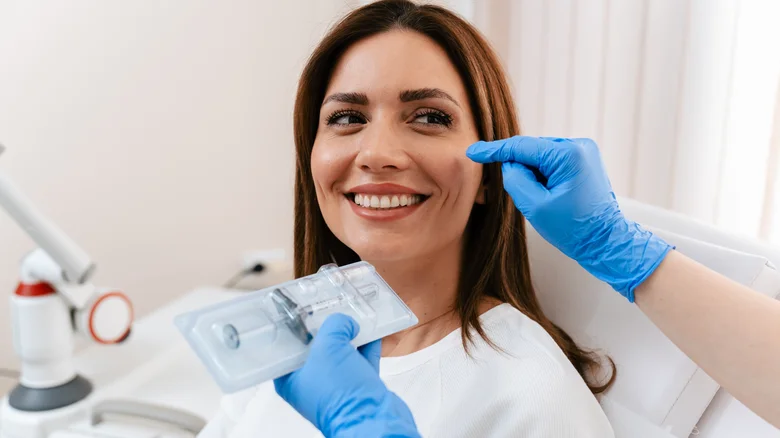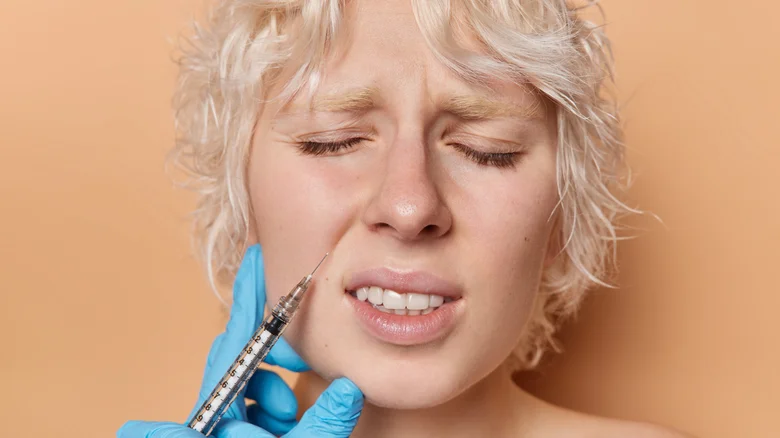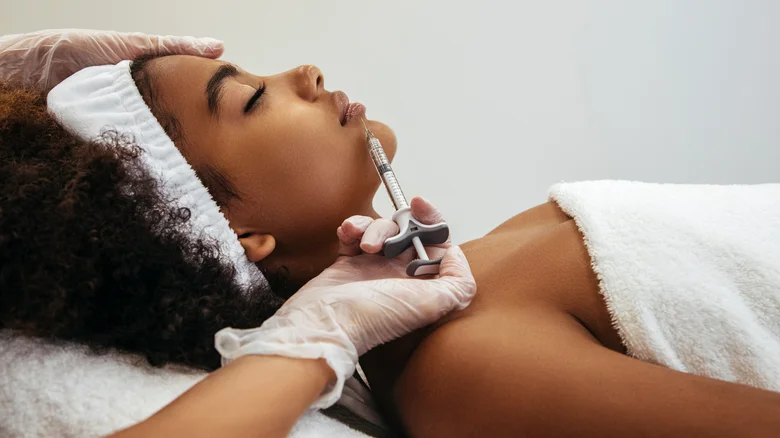Myths About Face Fillers You Should Stop Believing
Since modern fillers became popular in the early 2000s, people around the world have been rushing to plump up their faces. This slightly invasive cosmetic procedure has done wonders for those who want to achieve a more youthful appearance, but that’s not the only purpose of facial fillers. Patients who want to even out their features or fill in visible scars have also found them to be a wonderful treatment.
Unfortunately, fillers got a bad rap when celebrities started using them en masse in the 2010s. Or maybe your coworker came back from an appointment with bruises and that put you off injectable fillers for good. Well, Chris Bustamante, DNP, NP-C, founder of leading New York City aesthetic clinic Lushful Aesthetics, is here to debunk common myths surrounding dermal fillers to help us all understand them better and break the stigma surrounding them. While all cosmetic treatments involve risks, especially if needles are used, understanding what to expect should ease any concerns you may have about facial fillers.
Myth: Face fillers are only used for one aesthetic reason

The primary reason for using dermal fillers may seem pretty obvious: people want to add volume to their face. However, Chris Bustamante shares exclusively with Glam that there are in fact two main purposes of facial fillers, the other being to restore sunken areas due to aging. This can be anything from under the eyes to sunken areas of the cheeks. “Fillers as far as restoration is concerned are usually minimal when using a comprehensive plan for anti-aging,” he explains.
However, the use of fillers for augmentation is much broader, Bustamante warns us. For example, if a patient wants to increase the volume of the bridge of the nose or address structural issues, they should be prepared to receive more syringes. “You also have to keep in mind that many younger patients seek augmentations and the results can be extremely natural even when using larger amounts of filler,” Bustamante adds. “It’s all about understanding the anatomy, filler placement, filler rheology (the biophysical property of each type of filler), and the patient’s goals.”
Myth: Everyone experiences the same after-effects of face fillers

When injections are given, bruising and swelling can occur, but according to Chris Bustamante, these after-effects depend on many factors and are different for each person. “In most cases, it’s more of a suggestion that ‘it’s all resolved after two weeks. ’ That may not always be the case,” he tells Glam exclusively, adding, “I like to explain directly to my patients that this will vary greatly depending on how many syringes of filler are placed, what type of filler is used, and where the filler is placed.” Typically, Bustamante estimates swelling is apparent in about three days, but patients should be fully healed by six weeks after injections. “And just to clarify, the results will look better day by day and it’s entirely possible that you may like the results in two weeks but know that they will resolve after that,” he adds.
Bruising is another issue entirely and will depend on the client, such as if they are on blood thinners or have consumed alcohol prior to treatment. If you notice extreme changes, don’t simply chalk it up to a side effect of the fillers. “Always report any swelling, pain, or color change to your doctor immediately after treatment so they can address it,” Bustamante warns.
Myth: Face fillers are extremely painful

The worst part about facial fillers is the procedure itself, but Chris Bustamante assures us it’s not all that bad: “Most areas of the face, with the exception of the lips (sorry!), are not too painful, especially when using a cannula to inject the filler.” He tells Glam exclusively that he uses specific sizes based on the injection site to ensure safety and minimal pain. If you experience excessive discomfort, tell your doctor right away so they can assess the situation, Bustamante advises.
While you may experience discomfort during the procedure, first-time facial filler users will be relieved to know that they shouldn’t feel any pain after the treatment, though some soreness is to be expected. The owner of Lushful Aesthetics tells us, “Mild pain is very normal and gets better day by day. Patients can take over-the-counter Tylenol if their primary care physician approves until it resolves.” However, many are able to go about their daily lives with little, if any, discomfort.
Myth: Face fillers will always break the bank

We all know that facial fillers are expensive, but what you may not know is that the final cost depends on whether the provider charges per syringe or per area, Chris Bustamante tells Glam exclusively. However, he notes that many centers price their services based on the number of syringes they use. One thing Bustamante made sure to point out is that more skilled providers will quote you more syringes because they can more accurately estimate how much filler your face needs than a less experienced person. “Don’t let price be the deciding factor,” he advises. “Go by the provider’s portfolio of work. Do their before and after photos match your vision? Do they have positive reviews and the right credentials? Then that’s who you should go to!”
The most important thing is to find a trusted professional who will deliver ideal results. “Yes, this does require a budget. But ultimately, it’s your face, and while most fillers are absorbable, don’t think it’s an easy fix if it’s done wrong,” Bustamante warns. “Plus, you’ll pay even more to fix it.” In short, fillers are an investment, but if you find the right provider, you’ll find they’re worth the extra money.
Myth: Face fillers are the only way to stay looking young

If you’re thinking about using facial fillers as an anti-aging procedure, you’re on the right track, but that shouldn’t be the first treatment you look for. Chris Bustamante explains that lasers and chemical peels are two of the best procedures that will keep you looking young. “Lasers and chemical peels create your own natural collagen and elastin, address skin pigmentation issues, and improve skin texture, all while keeping you looking exactly like you are,” he tells Glam exclusively. According to Bustamante, adding a neuromodulator like Botox three to four times a year in addition to laser or chemical peels is the perfect formula for a fresh face.
That’s not to say that fillers aren’t necessary, but our expert believes they shouldn’t be your first choice if your goal is to look young. “Fillers and surgery, of course, play a role, but their use as an anti-aging/preventive treatment will become much less frequent,” Bustamante tells us. Aside from chemical peels, laser treatments and neuromodulators, the number one rule for maintaining healthy skin is to wear sunscreen. “If patients don’t wear sunscreen, virtually nothing we do in the office matters because they are destroying their results with daily UV exposure, as well as increasing their cancer risks,” Bustamante concludes.